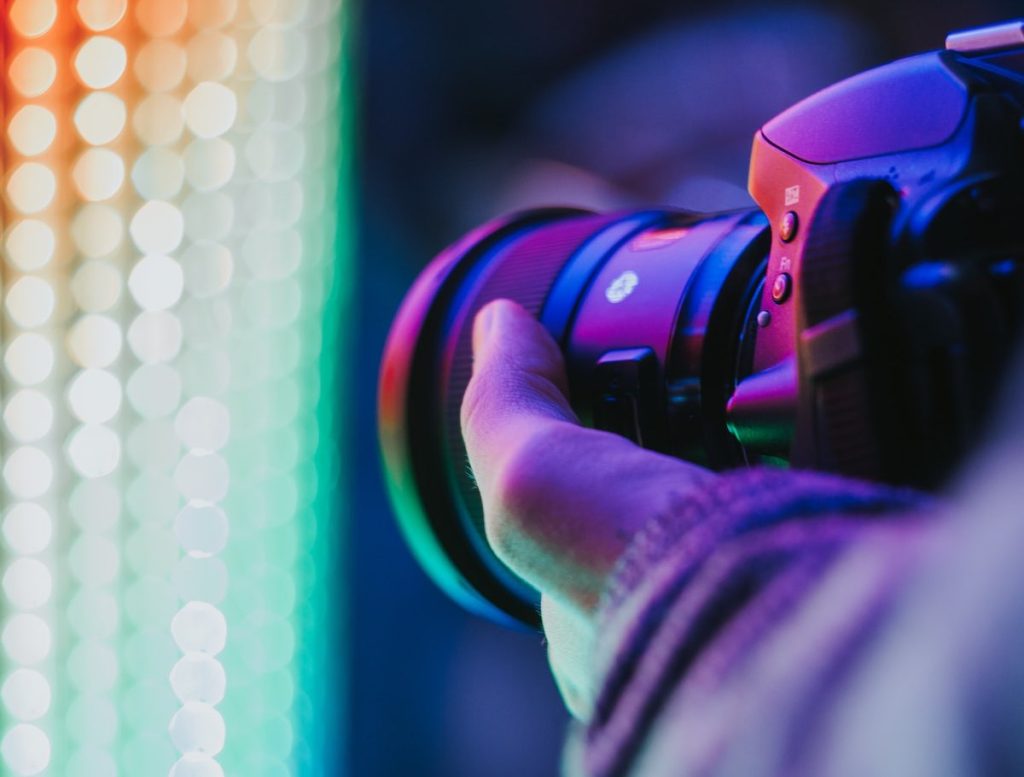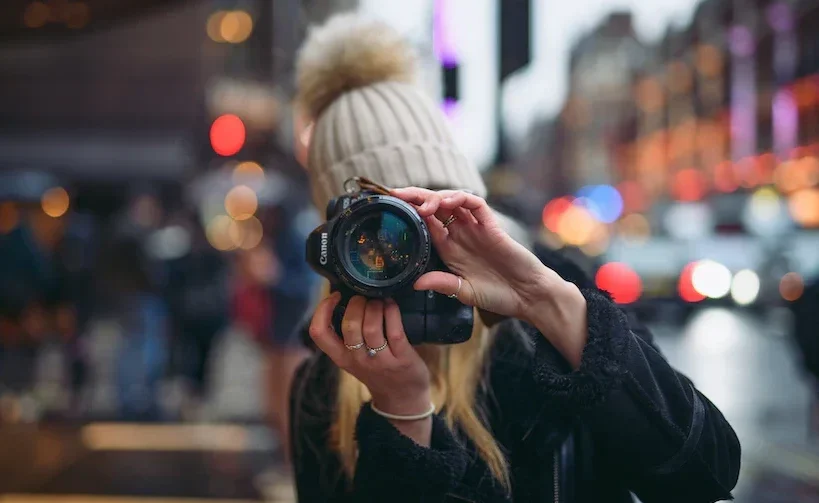Advances in technology have driven the evolution of photography. Once a field is exclusive to trained professionals, photography has become more accessible, user-friendly, and affordable. Now, anyone with a camera and editing software can explore popular trends in photography and produce near-professional standard photographs.
Technology isn’t the only factor that drives change in photography trends. The COVID-19 pandemic and subsequent lockdowns shaped the type of photos created in 2021. Drone photography, silhouettes, and artificial intelligence-powered image editing were some of the photo trends that dominated that year. In 2020, activism photography was all the rage.
Like many art forms, photography goes through trends. Whether you’ve been in the game a long time or just started, knowing what is trendy helps create engaging and relevant material. Trends impact the type of photos clients want. Therefore, trend awareness helps photographers understand clients better and create one-of-a-kind shots that stand out from the crowd.
1 – Phoneography
One of the technologies that changed photography is the camera phone. It has opened up the photography industry to anyone with a smartphone. With continued development in smartphone technology, phone cameras are beginning to rival professional cameras in terms of quality and convenience.
Most people are satisfied with their mobile phones for their photography needs. They are also the primary work tool for social media influencers and content creators. Furthermore, many photo printing sites allow users to create photo books, calendars, or wall art from photos uploaded from mobile devices.
Top-of-the-line camera phones have up to four different lenses and camera configurations, capable of producing studio-quality images. Add filters and aftermarket accessories, and you have a powerful creative tool that fits into your pocket.
Mobile photography also has a niche audience of enthusiasts who share images taken with their phones.
2 – Macro Photography
Macro photography is the extreme close-up photography of small subjects. This photography style, used by nature photographers, captures intricate details—for example, the face shot of an ant or the vein pattern of a flower petal. Macro photography takes ordinary subjects and shows them in new ways.
You need to be aware of two terms in macro photography: working distance and magnification. Working distance is the physical distance between the lens and the subject. The bigger your lens is(physically), the greater your working distance. It means you can be further away and keep your object the same size in the photo. We recommend using a long working distance to avoid frightening the subject.
The second term, magnification, refers to how big your subject is on the camera sensor compared with its size in the real world. Magnification of 1:1 means the subject’s size on the sensor equals the real world. A 2:1 magnification produces an image of the object twice as big on the sensor compared to its size in the real world. For macro photography, we recommend a magnification of at least 1:1.
Macro photography can be challenging. On top of lighting and focus issues, macro photographers have to deal with natural elements. Their subjects are usually tiny and often moving. Furthermore, changes in wind direction or intensity can affect flowers and plants. However, the rewards are satisfying when photographers capture never-before-seen images.
3 – Surrealism and Minimalism
Surrealism is an artistic movement that expresses the unconscious mind with illogical or disorienting ideas. The purpose of surrealist photography is to break away from representative images and evoke unexplainable emotions. The genre features dream-like scenes, distorted figures, and bizarre arrangements of recognizable subjects.
Since surrealist photography doesn’t strictly document the world as it is, it incorporates more editing than other genres. When combining or altering photos, look for editing errors like shadow mismatch that can distract the viewer. Surrealism may be about creating fantastic images, but they should be believable.
Minimalism is an artistic movement whose motto is ‘Less is more.’ Minimalist photography emphasizes a limited use of design elements – color, shapes, textures, and the number of objects – to achieve the desired effect. The aim is to highlight the beauty of simplicity by removing anything that distracts from the main subject. As a result, viewers see only what the photographer wants them to see.
The focal point of this seascape by minimalist photographer Hiroshi Sugimoto minimizes the ripples of the sea. Other design elements have been reduced to highlight the texture of the image.
Minimalism started in the 1950s and is growing not just as an art movement but as a lifestyle as well. A part of the genre’s growing popularity on social networks like Instagram can be attributed to the size of screens.
More and more people consume content on mobile devices. For the main subject to stand out on small screens, complex details or multiple features must be minimized or removed. Otherwise, the scene becomes busy and distracting.
4 – HDR Photography
Ever taken a picture of a beautiful sunset and the result looked nothing like what you saw? In the photo, the details of the sky are visible, but the ground surface is shadowed and dark. Or the other way around, where the ground is correctly exposed, but the sunset washed out. That’s because cameras don’t have the same ability as the human eye to perceive bright and dark tones.
Enter HDR photography. HDR (high dynamic range) photography is a photo processing technique that combines multiple versions of the same scene to make a single photo. The result is an image that most mimic what the human eye sees.
You can use up to three photos (under, regular, and overexposed) to create an HDR image. Many modern cameras come with an HDR setting that allows users to configure contrast settings and save time in editing.
5 – Vintage & Retro Photography
The oldest surviving photograph is a grainy black-and-white image of a rooftop taken by Joseph Nicephore Niepce in 1826. Photography has come a long way since then. With new technology, we can photograph planets, nebulae, and galaxies. But some people don’t like the crystal clarity of modern photography. It enters vintage or retro photography.
Vintage or retro photography refers to a style that imitates the aesthetics of photographs from the past. You can achieve the effect in two ways: using tools from a previous era, for example, analog film cameras, or using modern techniques to replicate the look and feel of vintage photos—for instance, photo-editing apps with vintage filters.
For successful retro or vintage photography, you should consider a few things. The content in the photograph (fashion, object, gestures, scenery) should match the historical period you are recreating. A laptop is a weird prop to have in a retro photograph. You shouldn’t style people in a vintage picture with current beauty trends.
The same applies to post-processing color treatment. Historical photography was limited to what was technologically available at the time. For example, cyanotype photo printing was popular in the Victorian era because it was cheaper than other photo printing processes.
Photo editing software like Nik Analog Efex has filters and presets for different types of cameras, films, and techniques. This software allows photographers to manipulate colors, mimic darkroom techniques, and add digital noise (grain, dust, scratches) to achieve the desired effect.
6 – Drones
Drone images trended in 2021 and 2022 – they’ll continue to be a trend today. Drones are becoming especially popular for real estate photography, where the unique bird’s eye perspective captures aerial images of clients’ properties.
Drones or unmanned aerial vehicles were designed with military applications in mind. Now they are used for nonmilitary purposes. However, aviation authorities regulate their use, so register with the relevant authorities.
The typical subjects of aerial photography are landscapes or cityscapes. Drones are also in demand for weddings and concerts. The entire appeal of drone photography is the shot that can’t be taken from any other perspective.
For the sharpest images, you may need to use a gimbal to steady the camera as the drone moves or take several shots to ensure you get some snapshots that are not blurry.
7 – 360 Panorama
It is difficult to capture the complete view of the Grand Canyon or Canterbury Cathedral in a single, close-range shot. The camera simply can’t see everything the human eye sees, only where you point the viewfinder. Fortunately, there are ways around this limitation.
Old panoramic photographs were made by capturing subjects in sequence and then aligning the prints. New panoramic photos use technology built into digital cameras that ‘stitch’ multiple images together to form a single, seamless picture.
There are three types of panoramas:
- 180-degree panoramas capture 180 degrees of the subject from left to right.
- 360-degree panoramas capture the entire scene in a single image.
- Spherical panoramas are 360-degree panoramas converted from a square to a spherical format.
Spherical panoramas, like this by One Zen, are appearing on social media websites.
The appeal of 360-degree photography is that they give viewers an immersive experience. Businesses use 360 panoramas for virtual reality tours of real estate properties, art exhibitions, or tourist attractions.
It’s not just businesses using 360 photographs. Facebook accepts 360 images, allowing regular people to post 360 pictures and memes. Further still, 360 cameras like the Samsung Gear 360 are affordable and user-friendly.
8 – Point and Shoot Size DSLRs
Since the invention of the microchip, modern technology has been downsizing the gadgets we use. Computers used to take up an entire room. Now they can fit in a slim handbag. From televisions to calculators, music players, and mobile phones, devices are getting smaller and smaller. Professional cameras are not the exception.
DSLRs (digital single-lens reflex) are a type of digital camera. They combine the camera body with the lens of your choice. Different lenses serve different purposes and produce different looks. For example, macro lenses for close-ups, wide angle lenses for landscape or architecture, or super telephoto lenses for astronomy.
The problem with DSLRs was that they were bulky and difficult to carry around. Advances in smartphone technology compounded the problem, threatening to make DSLRs obsolete. Newer DSLRs are smaller and better fit an active lifestyle. They give photographers more leeway to take pictures in any situation.
9 – Outdoor Photography
With people cooped up indoors for months, it is no surprise that outdoor photography makes the list. But COVID-19 isn’t the only crisis propelling outdoor photography. Degradation of the environment and climate change have been hot topic issues for the last ten years. Consumers and organisations are being more climate-conscious and going green.
The result is an increased interest in outdoor and nature photography. From shots of pristine spring waterways to the Great Pacific Garbage Patch, outdoor photographs inspire people to act.
For example, companies can use positive images of nature to supplement marketing messages around their products being natural or organic. Conversely, environmental agencies can use negative images of the environment to shift opinions and policies on environmental issues.
Outdoor Photography Trends
Here Boxed Water, a sustainable alternative to plastic water bottles, photographs its product in nature to create environmentally positive associations with the brand.
Outdoor photography does more than document the natural. It drives awareness and shapes action on climate issues.
In addition to bringing attention to mass species extinction, professional photographers can do their part by learning how to create digital business cards to reduce deforestation and paper waste.
10 – Muted colour photography
For an image or object in a photo to stand out, it is common to make the colors pop. After all, we tend to focus on items that look different from others. Furthermore, bold colors (saturation and brightness) elicit strong emotional responses. So why is muted color photography going to be a trend today?
The reason is simple. Society is overstimulated. Bright colors used in commercials and product packaging to catch our attention are causing eye strain. As a result, people experience visual fatigue and disengage with images.
Muted colors are easy on the eyes and help induce a sense of calm and harmony. This style of photography can be seen in stylized portraits or websites that don’t want images to be the primary focus. Check out the example below.
Muted Photography Trend
Muted color photography doesn’t eliminate vivid colors but subdues them. Like minimalist photography, it reduces the visual clutter of having many colors in an image. Like vintage photography, the washed-out effect of desaturated photographs feels like faded memories, creating nostalgia.



